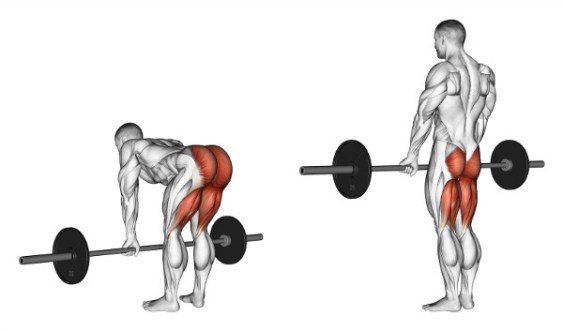
Deadlift Form and Tips: Master the King of Lifts
The deadlift is hailed as one of the most essential exercises in powerlifting, offering immense strength-building benefits. However, mastering the deadlift requires not only physical strength but also technical finesse. In this guide, we’ll explore every detail you need to perform this lift safely and effectively.
Why Is the Deadlift Essential?
The deadlift is more than just a strength exercise; it’s a full-body movement that engages:
- Glutes and Hamstrings: Key muscles for hip extension.
- Lower Back: Improves spinal stability and posture.
- Core: Builds overall strength and balance.
- Grip Strength: Enhances functional power for everyday tasks.
Perfect Deadlift Form
1. Setting Up
- Foot Placement: Stand with your feet shoulder-width apart, the barbell positioned over the midfoot.
- Grip: Use a double overhand grip or a mixed grip (one hand over, one hand under) for heavier lifts.
- Back Position: Keep a neutral spine—avoid rounding or hyperextending.
- Hips and Knees: Bend slightly at the hips and knees, lowering yourself to grab the bar.

2. Initiating the Lift
- Brace Your Core: Inhale deeply to create intra-abdominal pressure.
- Drive Through the Heels: Push the floor away with your legs while lifting the bar in a straight line.
-
Bar Path: The barbell should stay close to your body, almost sliding along your shins.

3. Lockout Position
- At the top, fully extend your hips without hyperextending your lower back.
- Engage your glutes to stabilize the lift.

4. Lowering the Bar
- Reverse the movement by pushing your hips back first.
- Control the descent to avoid dropping the weight abruptly.

Common Mistakes and How to Avoid Them
1. Rounding the Back:
Solution: Focus on keeping your chest up and shoulders back
2. Barbell Too Far:
Solution: Keep the bar close to your shins and thighs.
Tips to Enhance Your Deadlift
- Warm-Up Properly: Mobilize your hips, hamstrings, and ankles with dynamic stretches and foam rolling.
- Wear the Right Gear: Flat-soled shoes or deadlift slippers are ideal for stability.
- Progressive Overload: Increase weight incrementally to prevent plateaus and injuries.
- Film Your Lifts: Watching yourself on video can help you identify flaws in your form.
Deadlift Variations to Try
Sumo Deadlift: Reduces strain on the lower back, targeting more hip and thigh muscles.

Romanian Deadlift (RDL): Focuses on hamstring and glute development.

Deficit Deadlift: Increases range of motion and strengthens the bottom position.

Final Thoughts
The deadlift is a foundational exercise that not only builds strength but also boosts confidence. With proper form and consistent practice, you can transform your performance and avoid injuries. Remember, even the strongest athletes started with the basics—embrace the journey and keep lifting!






